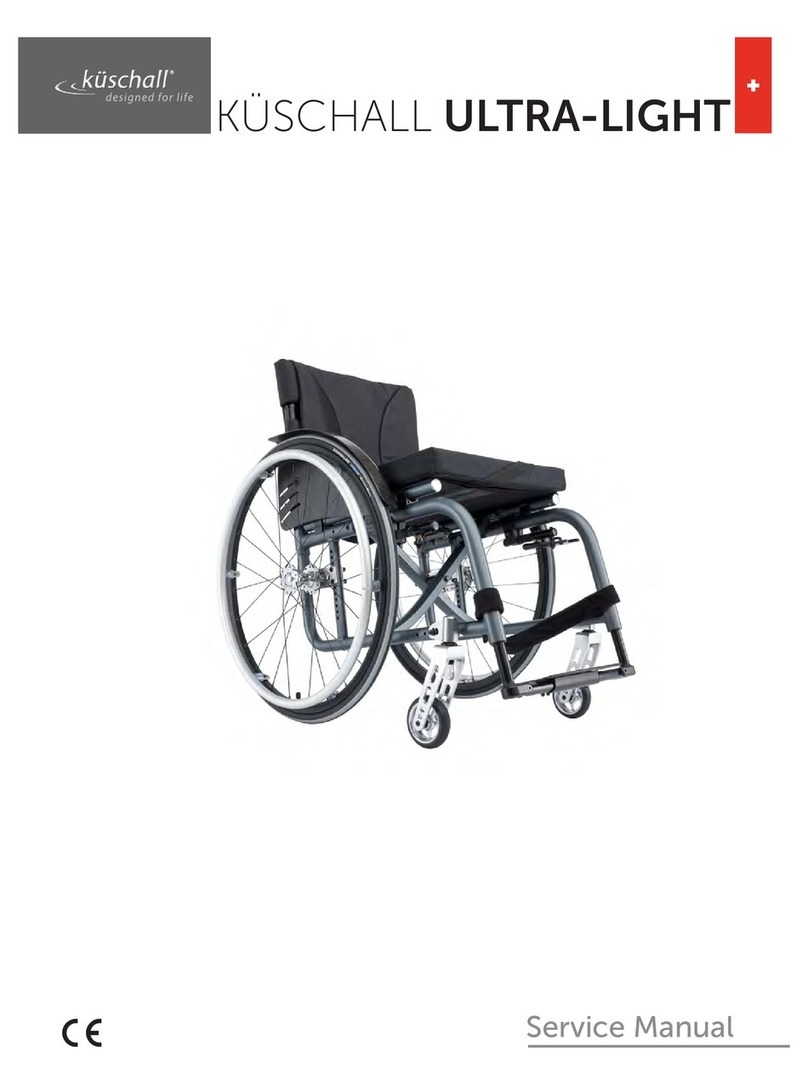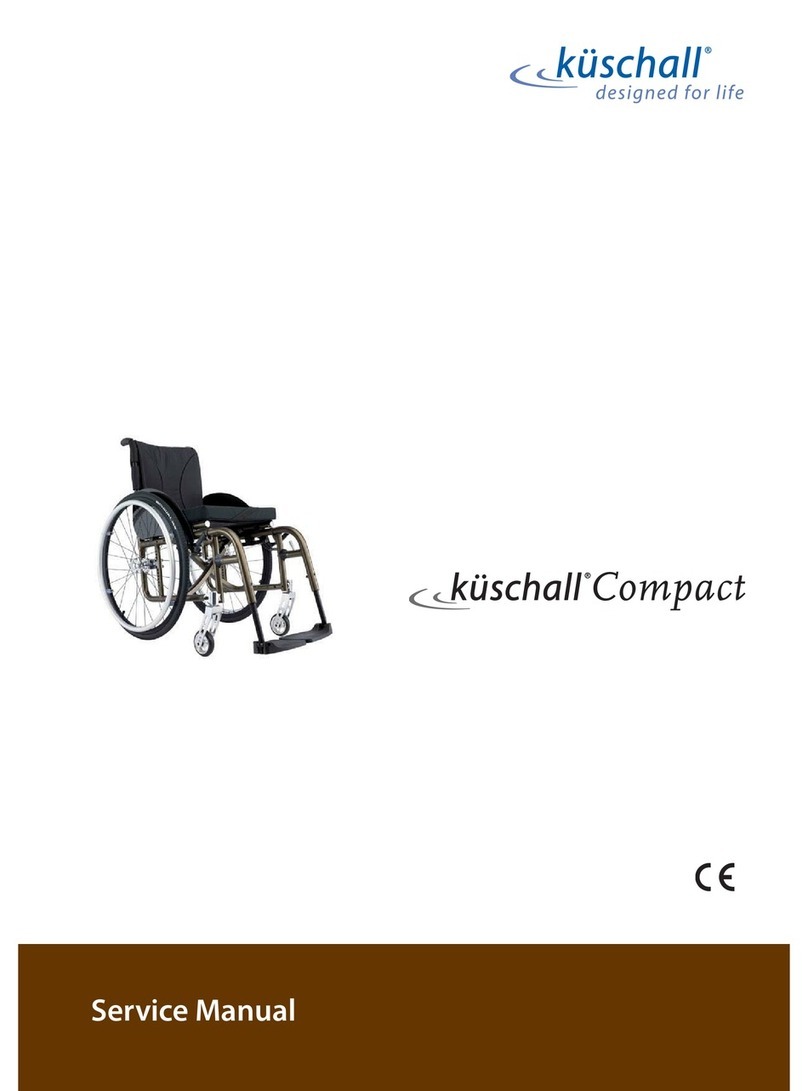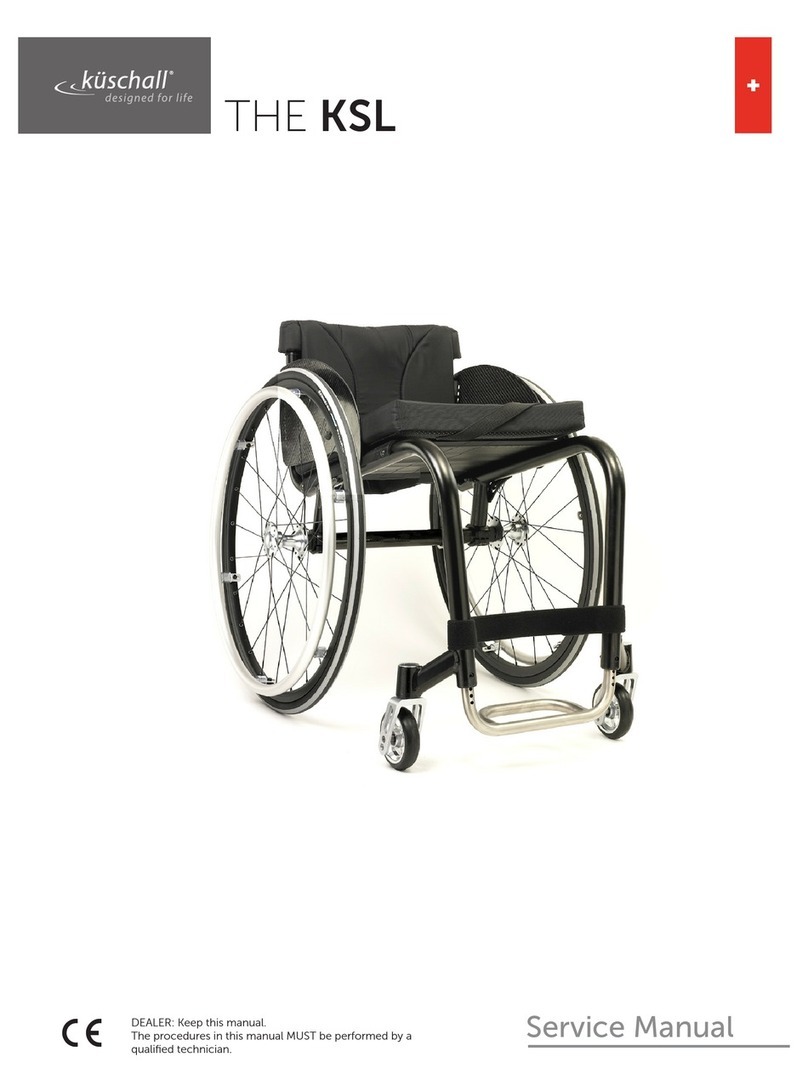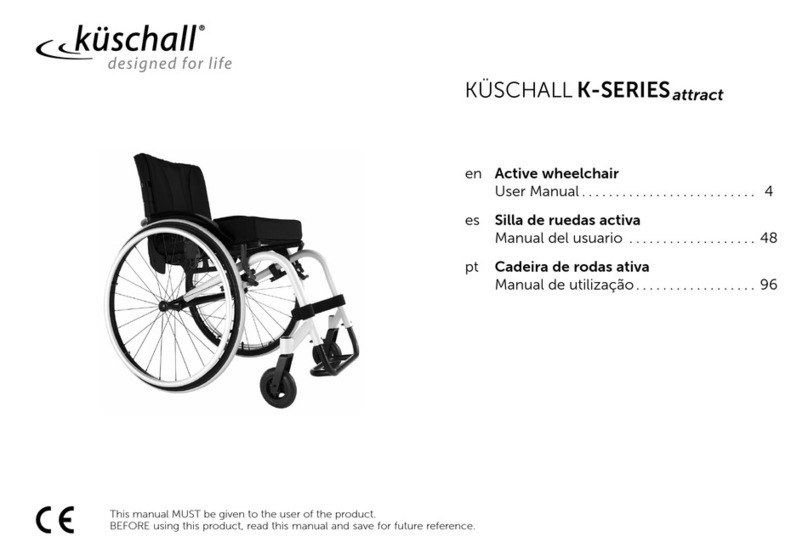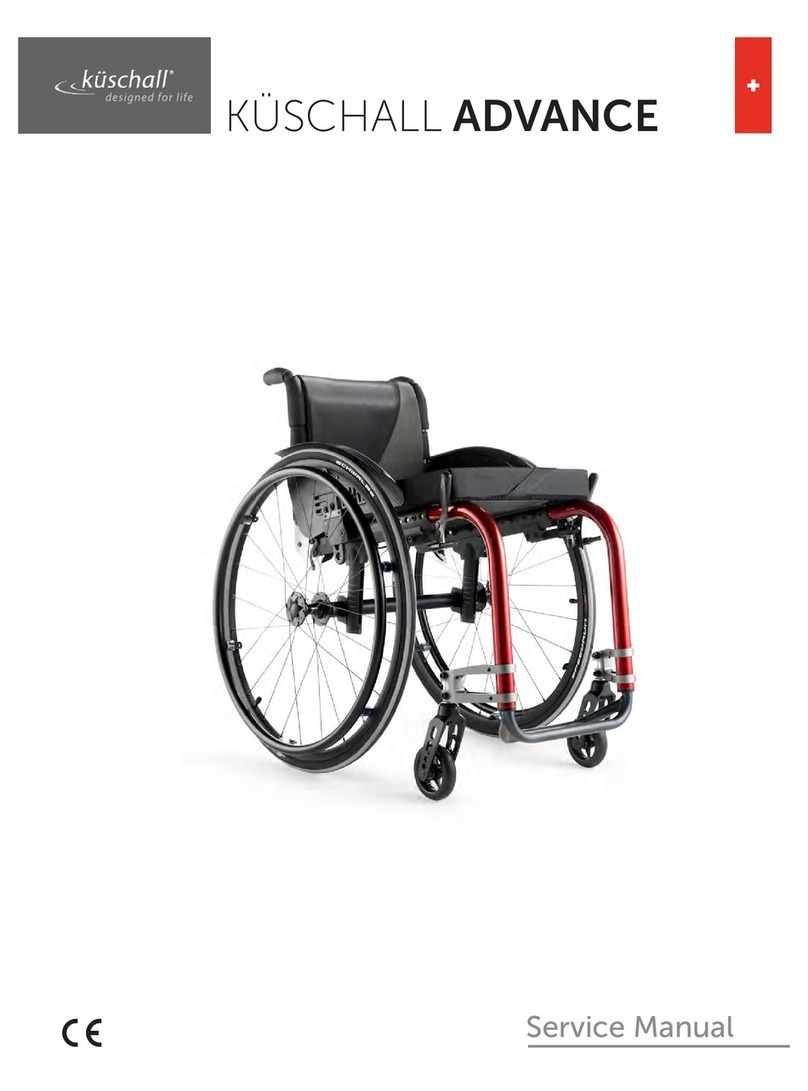Contents
1 General. . . . . . . . . . . . . . . . . . . . . . . . . . . . . . . . . . . . . . . 5
1.1 Information about the User Manual . . . . . . . . . . . . . 5
1.2 Symbols . . . . . . . . . . . . . . . . . . . . . . . . . . . . . . . . . 5
1.3 Warranty. . . . . . . . . . . . . . . . . . . . . . . . . . . . . . . . . 6
1.4 Intended use. . . . . . . . . . . . . . . . . . . . . . . . . . . . . . 6
1.5 Service life . . . . . . . . . . . . . . . . . . . . . . . . . . . . . . . 6
1.6 Copyright protection . . . . . . . . . . . . . . . . . . . . . . . . 6
2 Safety . . . . . . . . . . . . . . . . . . . . . . . . . . . . . . . . . . . . . . . . 7
2.1 Safety information. . . . . . . . . . . . . . . . . . . . . . . . . . 7
2.2 Safety devices . . . . . . . . . . . . . . . . . . . . . . . . . . . . . 7
3 Components and their functions . . . . . . . . . . . . . . . . . . . 8
3.1 Overview . . . . . . . . . . . . . . . . . . . . . . . . . . . . . . . . 8
3.2 Parking brakes. . . . . . . . . . . . . . . . . . . . . . . . . . . . . 9
3.3 Backrest . . . . . . . . . . . . . . . . . . . . . . . . . . . . . . . . . 10
3.4 Push handles. . . . . . . . . . . . . . . . . . . . . . . . . . . . . . 11
3.5 Side rest, infinitely height adjustable . . . . . . . . . . . . 12
3.6 Simple armrest, height-adjustable,
swivelling . . . . . . . . . . . . . . . . . . . . . . . . . . . . . . . . 12
3.7 Mudguard. . . . . . . . . . . . . . . . . . . . . . . . . . . . . . . . 13
3.8 Clothes-guard . . . . . . . . . . . . . . . . . . . . . . . . . . . . . 13
3.9 Footrest . . . . . . . . . . . . . . . . . . . . . . . . . . . . . . . . . 14
3.10 Antitipper . . . . . . . . . . . . . . . . . . . . . . . . . . . . . . . . 14
3.11 Vario-Ax . . . . . . . . . . . . . . . . . . . . . . . . . . . . . . . . . 15
3.12 Rear wheel extension . . . . . . . . . . . . . . . . . . . . . . . 15
3.13 Seat cushion . . . . . . . . . . . . . . . . . . . . . . . . . . . . . . 15
3.14 Seat position . . . . . . . . . . . . . . . . . . . . . . . . . . . . . . 16
4 Accessories. . . . . . . . . . . . . . . . . . . . . . . . . . . . . . . . . . . . 17
4.1 Pelvic belt . . . . . . . . . . . . . . . . . . . . . . . . . . . . . . . . 17
4.2 Air pump . . . . . . . . . . . . . . . . . . . . . . . . . . . . . . . . 17
4.3 Passive illumination. . . . . . . . . . . . . . . . . . . . . . . . . 17
4.4 Luggage carrier . . . . . . . . . . . . . . . . . . . . . . . . . . . . 18
4.5 Transit wheels . . . . . . . . . . . . . . . . . . . . . . . . . . . . . 18
5 Setup . . . . . . . . . . . . . . . . . . . . . . . . . . . . . . . . . . . . . . . . 20
5.1 Safety information. . . . . . . . . . . . . . . . . . . . . . . . . . 20
6 Using the wheelchair . . . . . . . . . . . . . . . . . . . . . . . . . . . . 21
6.1 Safety information. . . . . . . . . . . . . . . . . . . . . . . . . . 21
6.2 Braking during use . . . . . . . . . . . . . . . . . . . . . . . . . 21
6.3 Getting in and out of the wheelchair . . . . . . . . . . . . 22
6.4 Driving and steering the wheelchair . . . . . . . . . . . . . 22
6.5 Negotiating steps and kerbs . . . . . . . . . . . . . . . . . . 23
6.6 Going up and down stairs . . . . . . . . . . . . . . . . . . . . 25
6.7 Negotiating ramps and slopes . . . . . . . . . . . . . . . . . 26
6.8 Stability and balance when seated . . . . . . . . . . . . . . 27
7 Transport . . . . . . . . . . . . . . . . . . . . . . . . . . . . . . . . . . . . . 29
7.1 Safety information. . . . . . . . . . . . . . . . . . . . . . . . . . 29
7.2 Folding and unfolding the wheelchair . . . . . . . . . . . 29
7.3 Removing and fitting the rear wheels . . . . . . . . . . . . 30
7.4 Transporting the occupied wheelchair in a
vehicle . . . . . . . . . . . . . . . . . . . . . . . . . . . . . . . . . . 30
8 Maintenance . . . . . . . . . . . . . . . . . . . . . . . . . . . . . . . . . . 36
8.1 Safety information. . . . . . . . . . . . . . . . . . . . . . . . . . 36
8.2 Maintenance Schedule . . . . . . . . . . . . . . . . . . . . . . 36
8.3 Cleaning . . . . . . . . . . . . . . . . . . . . . . . . . . . . . . . . . 38
8.4 Disinfection. . . . . . . . . . . . . . . . . . . . . . . . . . . . . . . 38
9 Troubleshooting. . . . . . . . . . . . . . . . . . . . . . . . . . . . . . . . 39
9.1 Safety information. . . . . . . . . . . . . . . . . . . . . . . . . . 39
9.2 Identifying and repairing faults . . . . . . . . . . . . . . . . 40
10 After Use. . . . . . . . . . . . . . . . . . . . . . . . . . . . . . . . . . . . . . 41
10.1 Re-use . . . . . . . . . . . . . . . . . . . . . . . . . . . . . . . . . . 41
10.2 Disposal . . . . . . . . . . . . . . . . . . . . . . . . . . . . . . . . . 41


